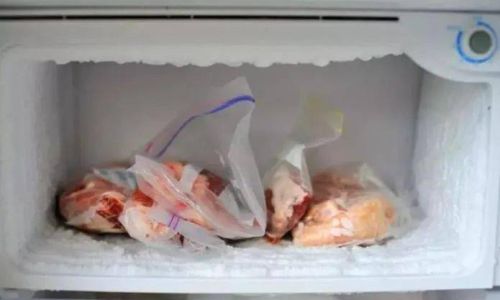Introduction
Thawing frozen meat properly is a critical step in ensuring food safety, preserving texture, and maintaining flavor. Among the various methods available, refrigerator thawing is widely regarded as the safest and most recommended approach by food safety experts. However, the time required to defrost meat in a refrigerator varies significantly based on factors such as the type of meat, its size, and the refrigerator’s temperature. This article explores the science behind refrigerator thawing, provides detailed timelines for different meats, and offers actionable tips to streamline the process while minimizing risks like bacterial growth. Whether you’re defrosting a small chicken breast or a massive turkey, understanding these variables will help you plan meals efficiently and avoid common pitfalls.
Why Refrigerator Thawing Matters
Before diving into timelines, it’s essential to grasp why refrigerator thawing is the gold standard. Unlike methods like room-temperature thawing or microwave defrosting, refrigerator thawing keeps meat at a consistent, cold temperature—typically below 40°F (4°C). This range inhibits the proliferation of harmful bacteria such as Salmonella, E. coli, and Listeria monocytogenes, which multiply rapidly between 40°F and 140°F (4°C and 60°C), a zone dubbed the “danger zone” by food safety agencies. While refrigerator thawing requires advance planning, it ensures meat thaws gradually and safely, retaining moisture and preventing uneven cooking.

Factors Influencing Thawing Time
The duration required to thaw meat in a refrigerator depends on several interrelated factors. Mastering these variables allows for accurate estimation and reduces guesswork.
-
Type of Meat
- Poultry: Whole chickens or turkeys take longer to thaw due to their density and bone structure. A 5-pound (2.3 kg) chicken may require 24 hours, while a 20-pound (9 kg) turkey needs 4–5 days.
- Beef: Thicker cuts like roasts or briskets defrost slower than thin steaks. A 1-inch (2.5 cm) steak thaws in 12–24 hours, while a 3-pound (1.4 kg) roast needs 2–3 days.
- Pork: Similar to beef, pork chops thaw faster than whole loins. A 1-pound (0.45 kg) pork tenderloin may take 18–24 hours.
- Fish and Seafood: Delicate and thin, fish fillets thaw quicker than red meat. A 1-pound (0.45 kg) salmon fillet typically defrosts in 12–18 hours.
-
Size and Thickness
Larger, thicker cuts retain cold longer, slowing thawing. For example, a 2-inch (5 cm) thick porterhouse steak requires 48 hours, while four 4-ounce (113 g) chicken breasts (1 inch thick) thaw in 24 hours.
-
Quantity
Stacking multiple packages of meat prolongs thawing time due to reduced airflow. Thawing two 1-pound (0.45 kg) chicken breasts simultaneously adds 6–8 hours compared to thawing one.
-
Refrigerator Temperature
Most refrigerators operate between 35°F and 38°F (1.7°C–3.3°C). Colder settings slow thawing, while warmer settings risk entering the danger zone. Use an appliance thermometer to verify accuracy.
-
Packaging
Airtight, vacuum-sealed packages thaw faster than loosely wrapped meat, as exposed surfaces can develop ice crystals that insulate the meat.
General Thawing Time Guidelines
While exact times vary, the following chart provides a baseline for common meats:
| Meat Type | Weight | Thawing Time (Refrigerator) |
|---|---|---|
| Chicken Breast | 4–6 oz (113–170g) | 12–24 hours |
| Ground Beef/Turkey | 1 lb (0.45 kg) | 18–24 hours |
| Steak (1 inch thick) | 8–12 oz (227–340g) | 24–36 hours |
| Whole Chicken | 4–5 lbs (1.8–2.3 kg) | 24–48 hours |
| Pork Chop | 6–8 oz (170–227g) | 18–24 hours |
| Fish Fillet | 6–8 oz (170–227g) | 8–12 hours |
| Turkey (whole) | 15–20 lbs (6.8–9 kg) | 4–5 days |
Step-by-Step Refrigerator Thawing Guide
-
Plan Ahead
Calculate thawing time based on the chart above. Add 6–12 hours for larger cuts or denser meats.
-
Prepare the Refrigerator
Clear a bottom shelf to prevent cross-contamination. Place a rimmed baking sheet or tray underneath to catch drips.
-
Remove Original Packaging (Optional)
For faster thawing, transfer meat to a leak-proof container or resealable plastic bag. This prevents juices from leaking and allows for more even thawing.
-
Monitor Progress

Check meat every 6–12 hours. Gently press to gauge softness; fully thawed meat should yield slightly but retain its shape.
-
Use Immediately or Refrigerate
Cook thawed meat within 1–2 days for poultry, ground meat, or fish, and 3–5 days for beef, pork, or lamb.
Safety Precautions During Thawing
-
Avoid Cross-Contamination
Never thaw meat on upper shelves where juices could drip onto ready-to-eat foods. Use dedicated utensils and cutting boards for raw meat.
-
Check for Spoilage
Discard meat with off-odors, slimy texture, or unusual discoloration. Freezer burn (grayish-brown patches) is safe but may affect taste.
-
Refreezing Rules
Meat thawed in the refrigerator can be refrozen without cooking, though quality may decline. Avoid refreezing meat thawed via other methods.
-
Temperature Control
Ensure your refrigerator stays below 40°F (4°C). Use a thermometer if unsure.
Accelerating Thawing Time (Without Compromising Safety)
While refrigerator thawing is inherently slow, these strategies can reduce time marginally:
-
Slice Larger Cuts
Cutting a roast into smaller portions reduces thickness, speeding thawing by 25–50%.
-
Use Cold Water Thawing for Urgency
If you forget to thaw, submerge sealed meat in cold water, changing the water every 30 minutes. Cook immediately afterward.
-
Microwave Defrosting (Last Resort)
Use the microwave’s defrost setting, but cook the meat immediately to prevent bacterial growth.

Common Mistakes to Avoid
-
Thawing at Room Temperature
Leaving meat on the counter exposes it to the danger zone, risking spoilage.
-
Overcrowding the Refrigerator
Poor airflow increases thawing time and raises internal fridge temperatures.
-
Ignoring Packaging
Thawing meat in its original Styrofoam tray can lead to leakage and uneven thawing.
-
Refreezing Without Cooking
Refreezing meat thawed via cold water or microwave without cooking first is unsafe.
Alternative Thawing Methods: When Refrigerator Thawing Isn’t Possible
-
Cold Water Thawing
Submerge sealed meat in cold tap water, replacing the water every 30 minutes. A 1-pound (0.45 kg) package thaws in 1–2 hours.
-
Microwave Thawing
Use the defrost setting, rotating and flipping the meat periodically. Cook immediately.
-
Cooking From Frozen
Many cuts (e.g., steaks, chicken breasts) can be cooked directly from frozen, though cooking time increases by 50%.
Expert Tips for Optimal Results
- Label and Date Packages: Clearly mark frozen meat with the purchase or freeze date to track freshness.
- Invest in a Meat Thermometer: Ensure thawed meat reaches 165°F (74°C) for poultry, 145°F (63°C) for steaks, and 160°F (71°C) for ground meat during cooking.
- Repurpose Leftovers: Over-thawed meat can be repurposed into soups, stews, or casseroles to mask texture changes.
Conclusion
Refrigerator thawing is a balance of patience and precision. By understanding the variables at play—from meat type to refrigerator temperature—you can defrost frozen meat safely and efficiently. While the process demands forethought, the payoff in food safety and quality is unmatched. Remember the 24-hour rule (allow one day per 5 pounds of meat), prioritize hygiene, and embrace planning to transform frozen proteins into delicious, worry-free meals. Whether you’re meal-prepping for the week or hosting a holiday feast, mastering refrigerator thawing ensures your kitchen remains a haven of safety and flavor.





0 comments